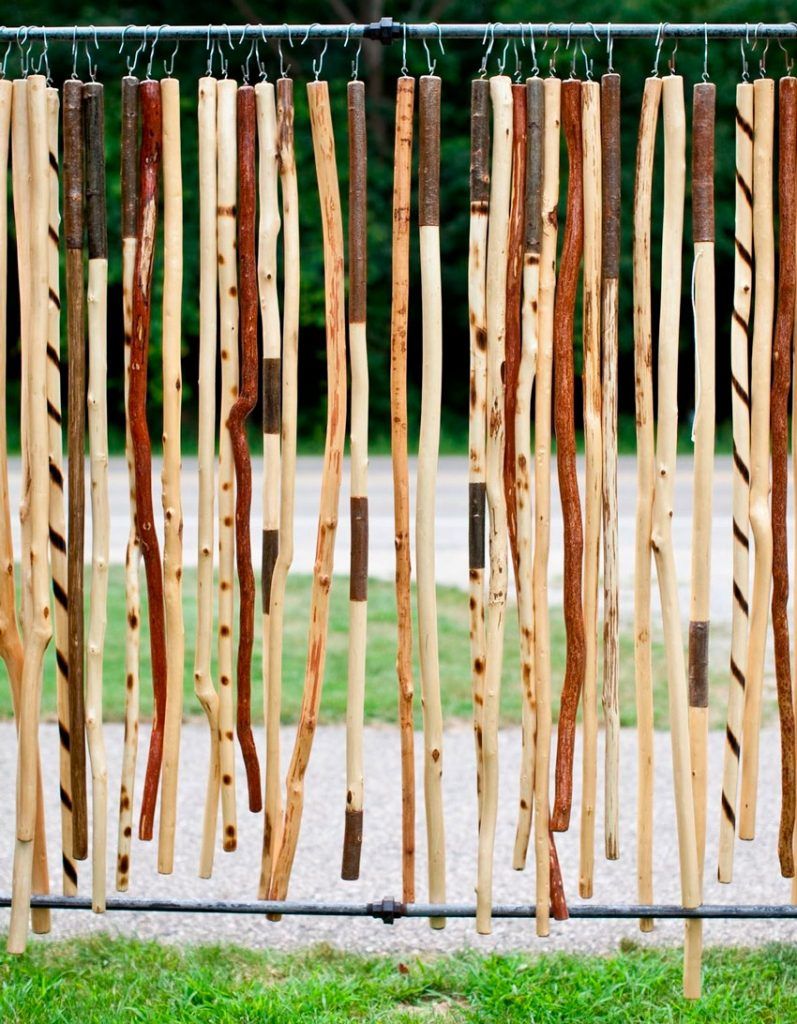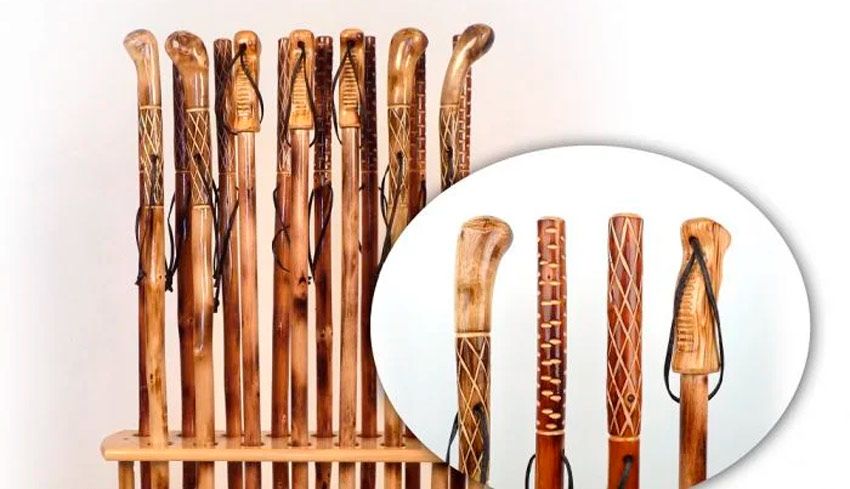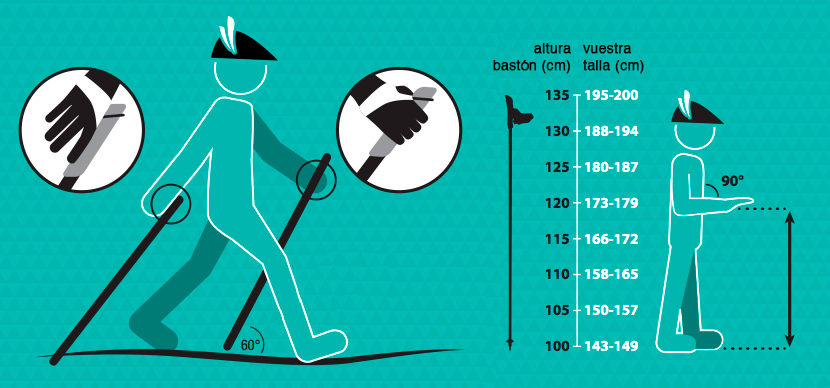Guide to buying a wooden cane
6 years ago · Updated 6 months ago

- How to choose the ideal wooden walking stick
- Handcrafted wooden walking sticks and shepherd's crooks
- What is the best wood for making sticks?
- Which type of wood is most recommended for a walking stick?
- Types of wooden sticks
- Things to consider when buying a wooden walking stick
- How to use wooden walking sticks?
How to choose the ideal wooden walking stick
For centuries, wooden walking sticks have been a symbol of elegance and distinction. Today, although they are still used as a support for the elderly or those with reduced mobility, their use goes far beyond this. Wooden walking sticks and shepherd's crooks are also perfect companions for outdoor activities such as hiking, nature walks, or mushroom picking.
In our online store, you will find a carefully selected range of wooden walking sticks, ideal both as practical tools and as original gifts with personality.
Handcrafted wooden walking sticks and shepherd's crooks
Among the wide range of sticks available, those handcrafted from wood remain the most popular. Each piece is unique, carefully crafted by expert hands that select the best pieces of wood, looking for those with fewer knots, imperfections, or branches.
In many cases, these small natural marks are incorporated into the design, adding character and transforming each stick, gayato or walking stick into a special piece with a history. The entire process, from the selection of the wood to the final finish, is carried out in the traditional way, as it has been done for generations.
What is the best wood for making sticks?
There are several types of wood suitable for making handmade wooden sticks. We will explain the requirements that a good wood must meet for this purpose. Often, the choice of one species or another also depends on the type of wood we have most readily available.
A good wood for making our walking stick must be hard, flexible, and resistant to wear and tear.
However, the hardest wood will not always be the best choice. One of the characteristics of hard woods is their low flexibility, which can cause the stick to break or crack. In addition, hardwoods are generally heavier due to their density, and we already know that when walking, a lightweight stick is more comfortable. Therefore, this type of wood can be uncomfortable for prolonged use.
Which type of wood is most recommended for a walking stick?
If what we want to make is a walking stick, the ideal wood could be hazel or chestnut. These are types of wood that have traditionally been used to make tools and baskets. In fact, the same chestnut baskets we use today to harvest mushrooms have been used for centuries to transport fruit, food, and firewood.
Hazel and chestnut are not only flexible, but also very strong and lightweight woods. Furthermore, the growth of these trees makes it easy to obtain straight sticks of sufficient length to shape them into hooks, canes, or walking sticks.
These are not the only two species. In addition to hazel and chestnut, other woods such as ash, elm, blackthorn, willow and medlar are also perfectly suitable for making handmade sticks.

How to obtain wood for making a stick
When we want to make a wooden stick, it is not enough to find a tree and cut off a branch. There are a number of preliminary considerations to take into account if we want to obtain a quality wooden stick.
The time of year is important. We must choose when the tree is least active. For example, when it is losing its leaves or when it has already developed fruit. These periods usually coincide with fall or winter. Thus, these two seasons will determine when we cut our wooden sticks.
The importance of the lunar phases
Sap is to trees what blood is to people. It flows inside them, and does so differently depending on the lunar phase we are in.
In ascending phases there is a greater flow of sap than in descending phases, which is why we should choose the latter, the descending phases, and avoid the ascending phases as much as possible.
By choosing the right lunar phase, we will obtain wood with a lower moisture content, which is easier to dry and dries more quickly and evenly. This is essential to ensure the stability, strength, and durability of wooden walking sticks, as well as minimizing any cracks that may appear during the drying process.
The importance of choosing the branch we are going to use
When our grandparents used a method, it was not without reason. Experience told them that they had to do it that way. That is why, when we start making a wooden walking stick, it makes more sense to use a rod or branch rather than a piece of wood.

Advantages of using a stick or branch to make a walking stick:
- The branches are more uniform along their entire length
- They have better aesthetic qualities
- Since they do not produce any cuts in their fibers, they are more durable and resistant
- They minimize the appearance of hardness and splinters
- They are more comfortable. They combine hard wood on the inside and soft wood in the bark. They are more pleasant to the touch
- If we want to make a traditional stick, this is how they have been made for many years
Types of wooden sticks
There are many different types of sticks made from wood. They depend on several factors
Types of sticks according to their use
Although they are usually associated with outdoor activities and the countryside, there are different types of sticks depending on their intended use: for walking in the countryside or in the city, to help elderly people or those with mobility difficulties, or even as decorative items. They can even be used for several of these activities at once
For each of these uses, certain elements of the wooden stick will vary, such as the handle, the design, and, above all, the length we will need.
Wooden sticks according to the type of construction or decoration
It is not only important to choose a good wood or a good stick. We must take into account whether the stick will be smooth, or if it needs to be decorated or pyrographed. The diameter of the stick and also the handle or length will depend on this. It is not the same to carve a wooden stick as it is to carve a smaller crook, or even a stick that incorporates a metal or other material handle.

How do craftsmen make wooden sticks?
Once the branch or stick has been chosen, the construction of the stick begins after it has dried. This initial part is important to ensure the durability of the piece.
Later, we will have to start decorating if it is to be worn. It is common to carve the wood with a knife or gouge.
Once the carving is complete, dyes can be applied. Either with natural dyes or with oils (olive or linseed). Applying these oils will protect the wood and give it a softer, silkier feel.
Finally, add any external elements such as handles if they are not made of wood, and metal or rubber tips or caps.
Things to consider when buying a wooden walking stick
Starting from the premise that a wooden walking stick is designed to help us walk, the aspects to consider are:
- It should increase and control balance. To do this, the base should be wider
- They should help reduce the weight borne by our lower limbs
- Reduce the feeling of fatigue during our walks
- They must ensure a correct position when walking
How to use wooden walking sticks?
Posture is essential when you want to get the most out of your walking sticks. The first rule to remember is the position: always about 10 cm in front of your supporting leg. So, when you want to move forward with your weaker leg, you should put your weight on the walking stick or wooden stick.
If you move forward again, this time with your supporting leg, the stick will also move forward, about 10 cm in front of it.
Here is a video that explains very well how mountain sticks work and how to use them:
https: //youtu. be/z84Wh9887Qo? t=40
How long should my wooden stick be?
To find the ideal height for your wooden stick, pilgrim's staff, or walking stick, measure from your elbow. Your elbow should be slightly bent when you hold the stick and your torso should be straight, perpendicular to the ground
Similarly, the height will depend on the type of handle and the shape of the stick, as a mountain stick, which is between 120 and 130 cm high, is not the same as a crook or walking stick, which is between 90 and 100 cm high.
Now that we have told you about the characteristics of the handmade walking sticks we sell, you will surely be decided on buying one for your outings. You are sure to succeed

Te pueden interesar